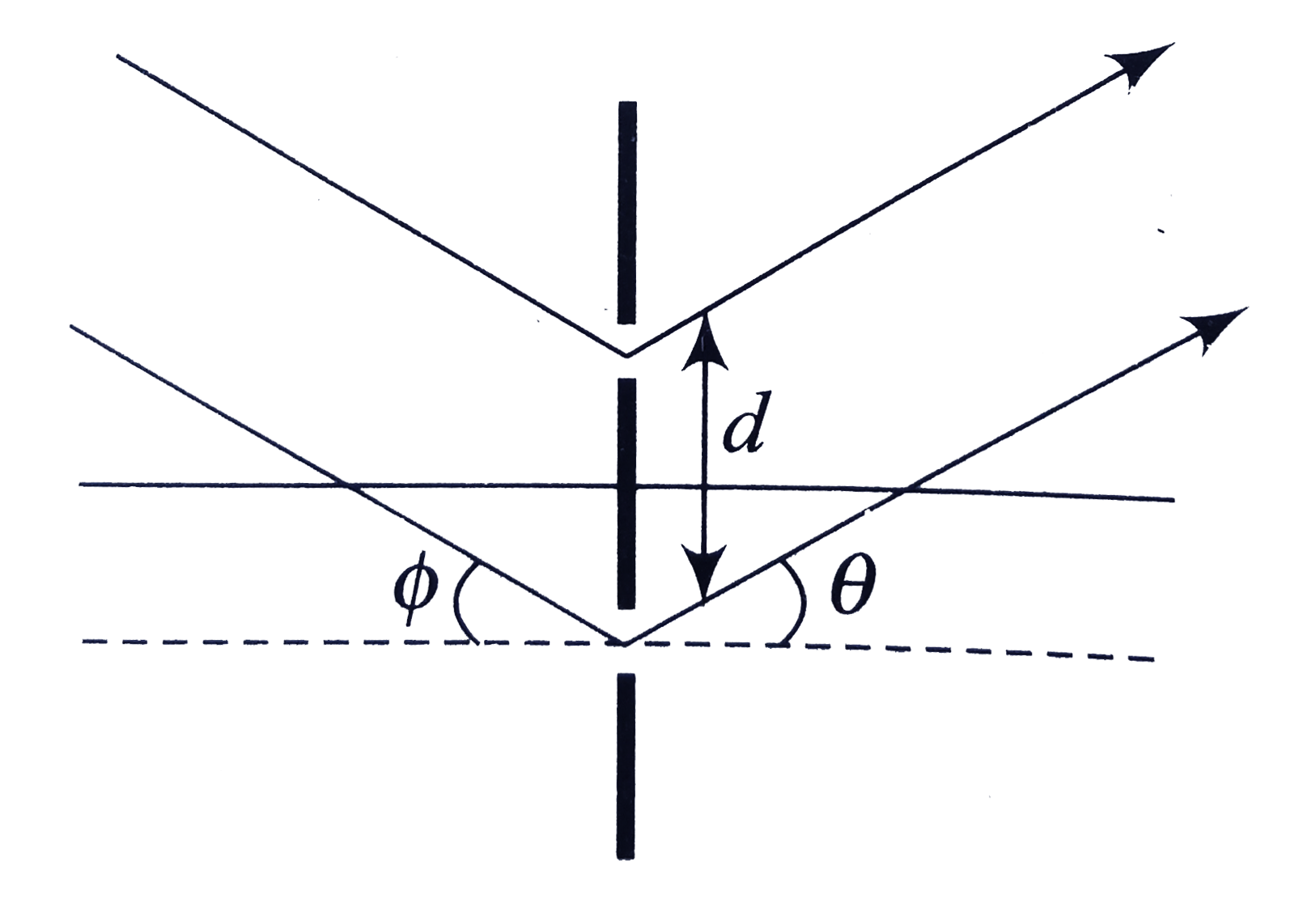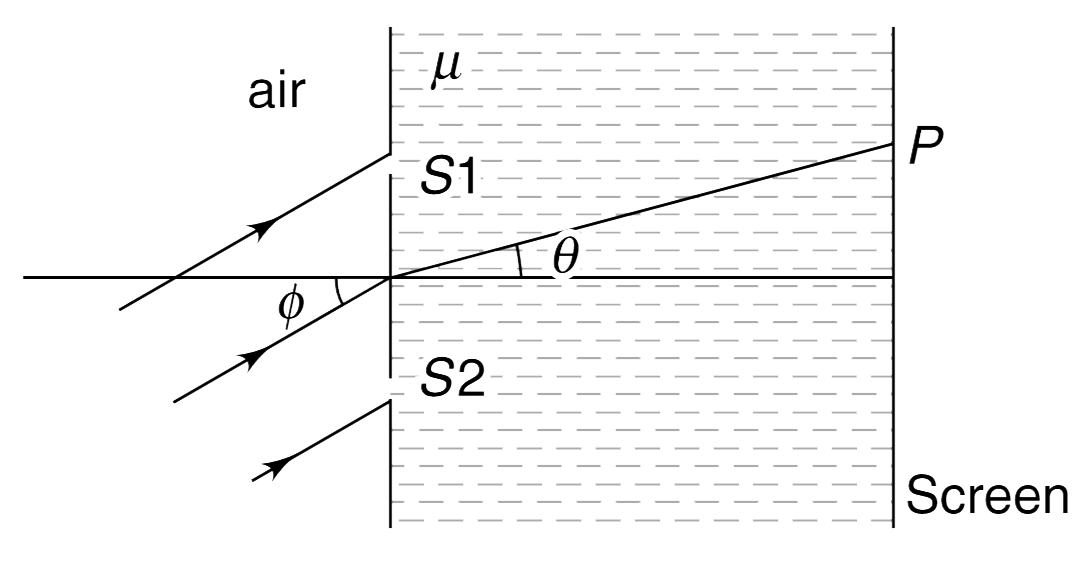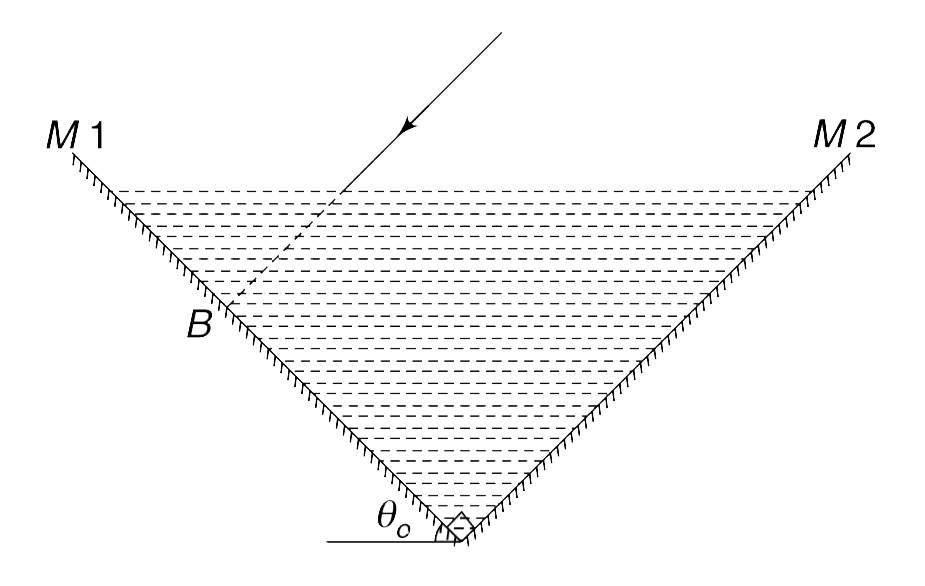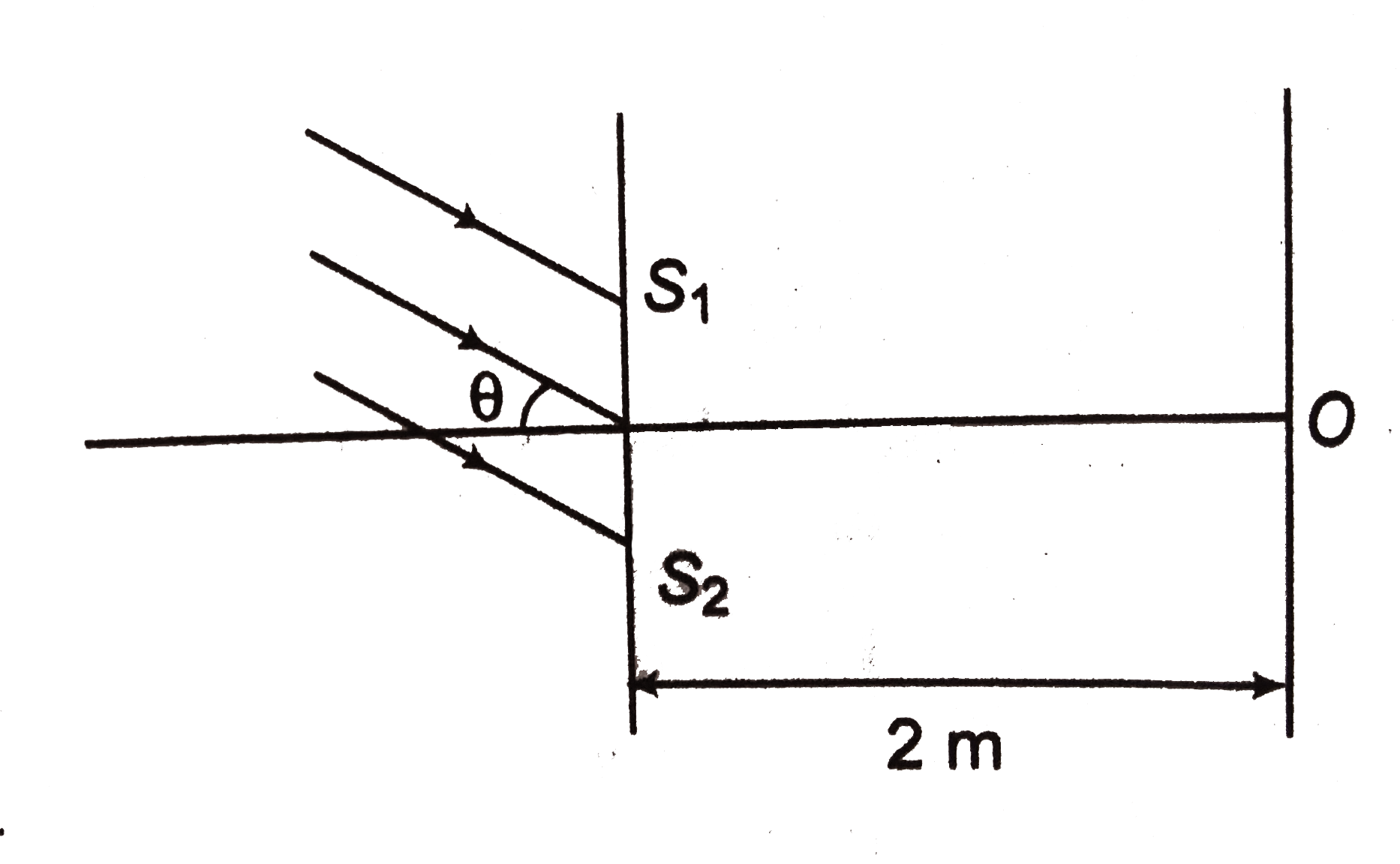Light is incident at an angle ϕ with the normal to a plane containing two slits of separation d. Select the expression that correctly describes the positions of the interference maxima in terms of the incoming angle ϕ and outgoing angle θ.

The correct Answer is:D
Step by step video, text & image solution for Light is incident at an angle phi with the normal to a plane containing two slits of separation d. Select the expression that correctly describes the positions of the interference maxima in terms of the incoming angle phi and outgoing angle theta. by Physics experts to help you in doubts & scoring excellent marks in Class 12 exams.
Updated on:21/07/2023Topper's Solved these Questions
- WAVE OPTICSBOOK - DC PANDEYCHAPTER - WAVE OPTICSEXERCISE - For JEE Advanced B. More than one option is correct
5 Videos
- WAVE OPTICSBOOK - DC PANDEYCHAPTER - WAVE OPTICSEXERCISE - For JEE Advanced C. Comprehension Type Questions. Passage (I)
2 Videos
- WAVE OPTICSBOOK - DC PANDEYCHAPTER - WAVE OPTICSEXERCISE - For JEE main (Only one option is Correct )
22 Videos
- SOLVED PAPERS 2018BOOK - DC PANDEYCHAPTER - SOLVED PAPERS 2018EXERCISE - JIPMER
22 Videos
Similar Questions
Light is incident at an angle ϕwith the normal to a vertical plane containing two narrow slits (S1 and S2) at separation d. The medium to the left of slit plane is air and wavelength of the incident light is λ. The medium to the right of the slit plane has refractive index μ. Find all values of angular position (θ)of a point P where we will observe constructive interference. Wavelength of incident light is λ.

View SolutionWhen a ray of light is incident normally on a plane mirror then the angle of reflection will be
View Solution
Knowledge Check
A ray of light is incident at an angle of 35∘ on a plane mirror. What is angle θ ?
 A35∘B45∘C55∘Dnone of these
A35∘B45∘C55∘Dnone of theseA light ray is incident normally on a plane mirror. The angle of reflection will be
A120∘B90∘C45∘D0∘A ray of light is incident on a plane mirror at an angle of 20∘ with the normal, at the point of incidence, Through what angle, the ray of light will be deviated from its direction of incidence ?
A20∘B40∘C90∘D140∘
Describe any two characteristic feature which distiguish interference and diffraction phenomena. Derive the expression for the intensity at a point of the interference pattern in Young's double slit experiment.
(b) In the diffration due to single slit experiment, the aperture of the slit is 3 mm. If monochromatic light of wavelength 620 nm in incident normally on the slit, calculate the separation in between the first order minima and the 3rd order maxima on one side of the screen. The distance between the slit and the screen is 1.5 m.
View SolutionTwo plane mirrors M1 and M2, placed at right angles, form two sides of a container. Mirror M1 is inclined at an angle θ0 to the horizontal. A light ray AB is incident normally onM1. Now the container is filled with a liquid of refractive index μ so that the ray is first refracted, then reflected at M1. The ray is next reflected at M2 and then comes out of the liquid surface making an angle θ with the normal to the liquid surface. Find θ.

View SolutionA parallel beam of light (λ=5000Å) is incident at an angle θ=30∘ with the normal to the slit plane in a Young's double slit experiment. The intensity due to each slit is I_0. Point O is equidistant from S1andS2. The distance between slits is 1mm.

View SolutionA light ray incidents at an angle 'i' on a plane mirror and undergoes reflection. Arrange the following steps in sequential order to calculate the angle of deviation of the light ray.
(A) The angle between the incident ray and the extended light ray is 180∘ (B) In case of reflection, the angle of incidence (i) is equal to the angle of reflection (r). Then, the angle between the incident ray and the reflected ray is 2i. (C) Draw an imaginary line, extending the incident light ray, which represents the actual path of the light ray. (D) The angle of deviation is the angle between the reflected light ray and the actual path of the light ray, i.e., 180∘−2i
View SolutionA plane wavefront is incident with zero angle of incidence f a plance separating two media. The wavefront is
View Solution
